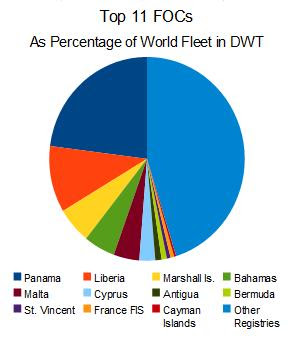Any ship can transport boxes of bullets or radar components; the value-add for shipping “typical” exports like guns or tanks is trustworthiness (implying connections with government officials) and general competency. A normal shipping company—i.e. one with ro-ros, container ships, etc.—seeking to enter the Russian and Ukrainian weapons market would do well to establish a relationship with Odessa companies such as Kaalbye in order to leverage their unique political connections.
The German firm Briese Schiffahrts GmbH and Co KG is another transporter of Russian and Ukrainian weapons. Based in Leer, Germany, Briese is one of the largest shipping companies in Germany and among the largest heavy-lift shippers in the world, with a fleet of over 140 ships. Heavy lift ships typically carry their own cranes, and so can move large, heavy, and unusually shaped cargo such as tanks, artillery, etc. Bulk carriers and normal cargo ships—such as those owned by Kaalbye Shipping—cannot do so. This ability becomes even more useful if the port of discharge lacks proper infrastructure for handling such bulky cargo, since the ship can use its own crane rather than relying on old or non-existent port equipment. We believe that this gives Briese (and other EU heavy-lift firms discussed later) an important functional role in the Odessa Network: heavy weapons shipments, in particular to poor-infrastructure countries. This judgment is born of empirical data.
Briese has facilitated involved transporting heavy military equipment to poor-infrastructure states. Briese ships appear to be heavily staffed with Russian and Ukrainian captains and seamen, reflecting the fact that most of Briese’s crewing business comes from Russia and Ukraine.
2
The Norwegian firm Eide Marine Services is the second most frequent weapons transporter in our dataset. Eide is one of the few firms which possesses exactly such a ship, the Eide Transporter, which has been used multiple times to move unusual Russian military cargo to foreign customers. This includes Tarantul -class missile corvettes, Gepard -class frigates, and Svetlyak -class patrol boats to Vietnam, and Kilo -class submarines to China.
The Odessa Network centers on a group of Odessa-based private companies that regularly move large arms shipments. Affiliated EU and Russian shipping firms such as Briese Schiffahrts (and its subsidiary BBC Chartering) and Balchart play an important specialized role in transporting particularly large or sensitive shipments. The network is deeply interconnected. Personnel and equipment frequently cycle between different companies, and many network members are family members, close friends, former classmates, etc. The vast majority of weapons shipments leave from the Ukrainian port of Oktyabrsk, which was specially built by the USSR to move weapons (for example, this was the point of origin for Cuba-bound missiles in 1963). Despite being located in Ukraine, Oktyabrsk is functionally controlled by Russia—the port manager is a former Russian navy captain, and the port owner is a Kremlin-linked oligarch. Russian state weapons export agencies and Odessa Network firms maintain offices and personnelin Oktyabrsk.
more
[September 7 2013]
A new study by independent conflict researchers describes a heavy volume of traffic in the past two years from Ukraine’s Oktyabrsk port, just up the Black Sea coast from Odessa, to Syria’s main ports on the Mediterranean. The dozens of ships making the journey ranged from smaller Syrian- and Lebanese-flagged vessels to tanker-size behemoths with a long history of hauling weapons cargos.Despite being in Ukraine, Oktyabrsk “is functionally controlled by Russia,” and the port is headed by a former Russian navy captain and owned by a business magnate with close ties to the Kremlin, the report said. Major Russian weapons exporters have offices there, alongside Ukrainian and Russian shipping and logistics companies the report has dubbed the “Odessa Network.”
http://www.c4ads.org/


No comments:
Post a Comment